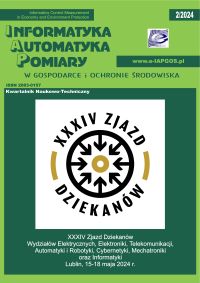Abbasifard M. et al.: Effects of N-acetylcysteine on systemic lupus erythematosus disease activity and its associated complications: a randomized double-blind clinical trial study. Trials 24(1), 2023, 1–7.
DOI: https://doi.org/10.1186/s13063-023-07083-9
Alazwari S. et al.: Improved Coyote Optimization Algorithm and Deep Learning Driven Activity Recognition in Healthcare. IEEE Access, 2024.
DOI: https://doi.org/10.1109/ACCESS.2024.3357989
Ali E. S. et al.: Implementation of coyote optimization algorithm for solving unit commitment problem in power systems. Energy 263, 2023, 125697.
DOI: https://doi.org/10.1016/j.energy.2022.125697
Barbhaiya M. et al.: Association of Ultraviolet B Radiation and Risk of Systemic Lupus Erythematosus Among Women in the Nurses’ Health Studies. Arthritis Care & Research, 2023.
DOI: https://doi.org/10.1002/acr.24974
Basawaraj B. G., Channappa B.: Hybrid coyote predator with DL network for brain disorder detection using EEG signals. Computer Methods in Biomechanics and Biomedical Engineering: Imaging & Visualization, 2023, 1–15.
DOI: https://doi.org/10.1080/21681163.2023.2227736
Ceccarelli F. et al.: Prediction of chronic damage in systemic lupus erythematosus by using machine-learning models. PloS one 12(3), 2017, e0174200 [http://doi.org/10.1371/journal.pone.0174200].
DOI: https://doi.org/10.1371/journal.pone.0174200
Choi M. Y. et al.: Association of Sleep Deprivation and the Risk of Developing Systemic Lupus Erythematosus Among Women. Arthritis Care & Research 75(6), 2023, 1206–1212.
DOI: https://doi.org/10.1002/acr.25017
Cui J. et al.: Risk prediction models for incident systemic lupus erythematosus among women in the Nurses’ health study cohorts using genetics, family history, and lifestyle and environmental factors. Seminars in Arthritis and Rheumatism 58, 2023, WB Saunders.
DOI: https://doi.org/10.1016/j.semarthrit.2022.152143
De Souza R. C. T. et al.: Binary coyote optimization algorithm for feature selection. Pattern Recognition 107, 2020, 107470.
DOI: https://doi.org/10.1016/j.patcog.2020.107470
Diab A. et al.: Coyote optimization algorithm for parameters estimation of various models of solar cells and PV modules. IEEE Access 8, 2020, 111102–111140.
DOI: https://doi.org/10.1109/ACCESS.2020.3000770
García E. G. et al.: The impact of disease activity on health-related quality of life in patients with systemic lupus erythematosus. Medicina Clínica (English Edition) 160(10), 2023, 428–433.
DOI: https://doi.org/10.1016/j.medcle.2023.05.002
Jiang Z. et al.: Identification of diagnostic biomarkers in systemic lupus erythematosus based on bioinformatics analysis and machine learning. Frontiers in Genetics 13, 2022, 865559.
DOI: https://doi.org/10.3389/fgene.2022.865559
Kim J. W. et al.: Sex hormones affect the pathogenesis and clinical characteristics of systemic lupus erythematosus. Frontiers in Medicine 9, 2022, 906475.
DOI: https://doi.org/10.3389/fmed.2022.906475
Kumar A. et al.: IoT-based ECG monitoring for arrhythmia classification using Coyote Grey Wolf optimization-based deep learning CNN classifier. Biomedical Signal Processing and Control 76, 2022, 103638.
DOI: https://doi.org/10.1016/j.bspc.2022.103638
Lazar S., Kahlenberg J. M.: Systemic lupus erythematosus: new diagnostic and therapeutic approaches. Annual review of medicine 74, 2023, 339–352.
DOI: https://doi.org/10.1146/annurev-med-043021-032611
Li L. et al.: Fuzzy multilevel image thresholding based on improved coyote optimization algorithm. IEEE Access 9, 2021, 33595–33607.
DOI: https://doi.org/10.1109/ACCESS.2021.3060749
Masood F. et al.: Novel approach to evaluate classification algorithms and feature selection filter algorithms using medical data. Journal of Computational and Cognitive Engineering 2(1), 2023, 57–67.
DOI: https://doi.org/10.47852/bonviewJCCE2202238
Parodis I. et al.: EULAR recommendations for the non-pharmacological management of systemic lupus erythematosus and systemic sclerosis. Annals of the Rheumatic Diseases, 2023.
DOI: https://doi.org/10.1136/rmdopen-2023-003297
Parthiban K., Kamarasan M.: Diabetic retinopathy detection and grading of retinal fundus images using coyote optimization algorithm with deep learning. Multimedia Tools and Applications 82(12), 2023, 18947–18966.
DOI: https://doi.org/10.1007/s11042-022-14234-8
Petri M. et al.: Effect of systemic lupus erythematosus and immunosuppressive agents on COVID‐19 vaccination antibody response. Arthritis Care & Research, 2023.
DOI: https://doi.org/10.1002/acr.25094
Reddy S. et al.: CoySvM-(GeD): Coyote optimization-based support vector machine classifier for cancer classification using gene expression data. Journal of Sensors, 2022, 1–9.
DOI: https://doi.org/10.1155/2022/6716937
Ribeiro M. et al.: Dengue Cases Forecasting Based on eXtreme Gradient Boosting Ensemble with Coyote Optimization. Training 92(7), 2006, 128–148.
Seetha J. et al.: Mango leaf disease classification using hybrid Coyote-Grey Wolf optimization tuned neural network model. Multimedia Tools and Applications, 2023, 1–27.
DOI: https://doi.org/10.1007/s11042-023-16964-9
Singh N et al.: Birth Outcomes and Rehospitalizations Among Pregnant Women With Rheumatoid Arthritis and Systemic Lupus Erythematosus and Their Offspring. Arthritis Care & Research, 2023.
DOI: https://doi.org/10.1002/acr.25087
Sobhana M. et al.: Hybrid Deep Learning Model for Prediction of Systemic Lupus Erythematosus. International Journal of Intelligent Systems and Applications in Engineering 11(4), 2023, 583–590.
Tong H. et al.: Chaotic coyote optimization algorithm for image encryption and steganography. Multimedia Tools and Applications, 2023, 1–27.
DOI: https://doi.org/10.1007/s11042-023-16240-w
Wang D. C. et al.: Systemic lupus erythematosus with high disease activity identification based on machine learning. Inflammation Research 72(9), 2023, 1909–1918.
DOI: https://doi.org/10.1007/s00011-023-01793-1







